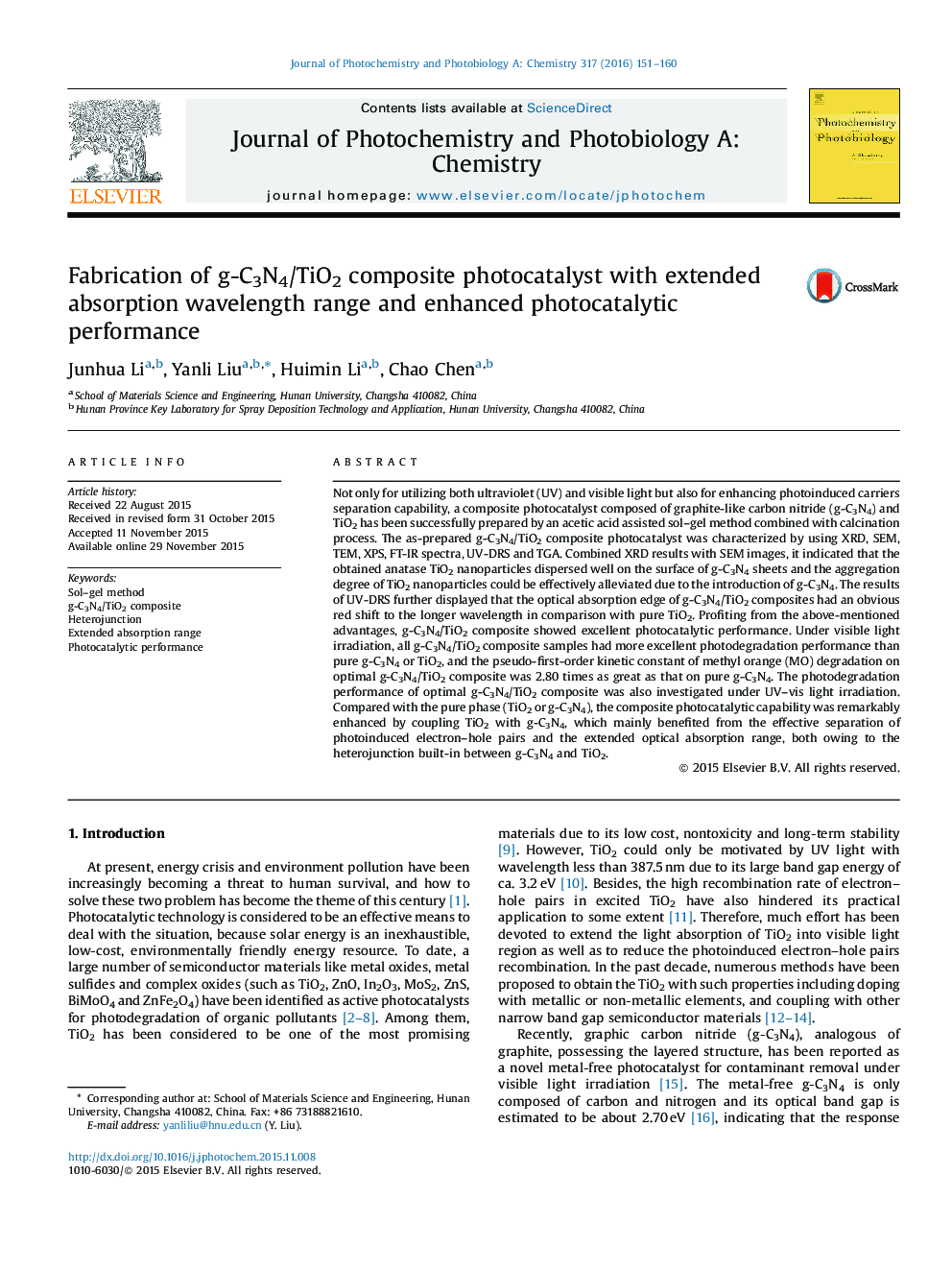| Article ID | Journal | Published Year | Pages | File Type |
|---|---|---|---|---|
| 26352 | Journal of Photochemistry and Photobiology A: Chemistry | 2016 | 10 Pages |
•The g-C3N4/TiO2 composite photocatalyst has been successfully fabricated by an acetic acid assisted sol–gel method combined with calcination process.•The aggregation degree of TiO2 nanoparticles could be effectively alleviated due to the introduction of g-C3N4.•The optical absorption edge of g-C3N4/TiO2 composite has an obvious red shift and the absorption wavelength range is extended after coupling TiO2 with g-C3N4.•The photocatalytic performance is enhanced due to the formation of heterojunction.
Not only for utilizing both ultraviolet (UV) and visible light but also for enhancing photoinduced carriers separation capability, a composite photocatalyst composed of graphite-like carbon nitride (g-C3N4) and TiO2 has been successfully prepared by an acetic acid assisted sol–gel method combined with calcination process. The as-prepared g-C3N4/TiO2 composite photocatalyst was characterized by using XRD, SEM, TEM, XPS, FT-IR spectra, UV-DRS and TGA. Combined XRD results with SEM images, it indicated that the obtained anatase TiO2 nanoparticles dispersed well on the surface of g-C3N4 sheets and the aggregation degree of TiO2 nanoparticles could be effectively alleviated due to the introduction of g-C3N4. The results of UV-DRS further displayed that the optical absorption edge of g-C3N4/TiO2 composites had an obvious red shift to the longer wavelength in comparison with pure TiO2. Profiting from the above-mentioned advantages, g-C3N4/TiO2 composite showed excellent photocatalytic performance. Under visible light irradiation, all g-C3N4/TiO2 composite samples had more excellent photodegradation performance than pure g-C3N4 or TiO2, and the pseudo-first-order kinetic constant of methyl orange (MO) degradation on optimal g-C3N4/TiO2 composite was 2.80 times as great as that on pure g-C3N4. The photodegradation performance of optimal g-C3N4/TiO2 composite was also investigated under UV–vis light irradiation. Compared with the pure phase (TiO2 or g-C3N4), the composite photocatalytic capability was remarkably enhanced by coupling TiO2 with g-C3N4, which mainly benefited from the effective separation of photoinduced electron–hole pairs and the extended optical absorption range, both owing to the heterojunction built-in between g-C3N4 and TiO2.
